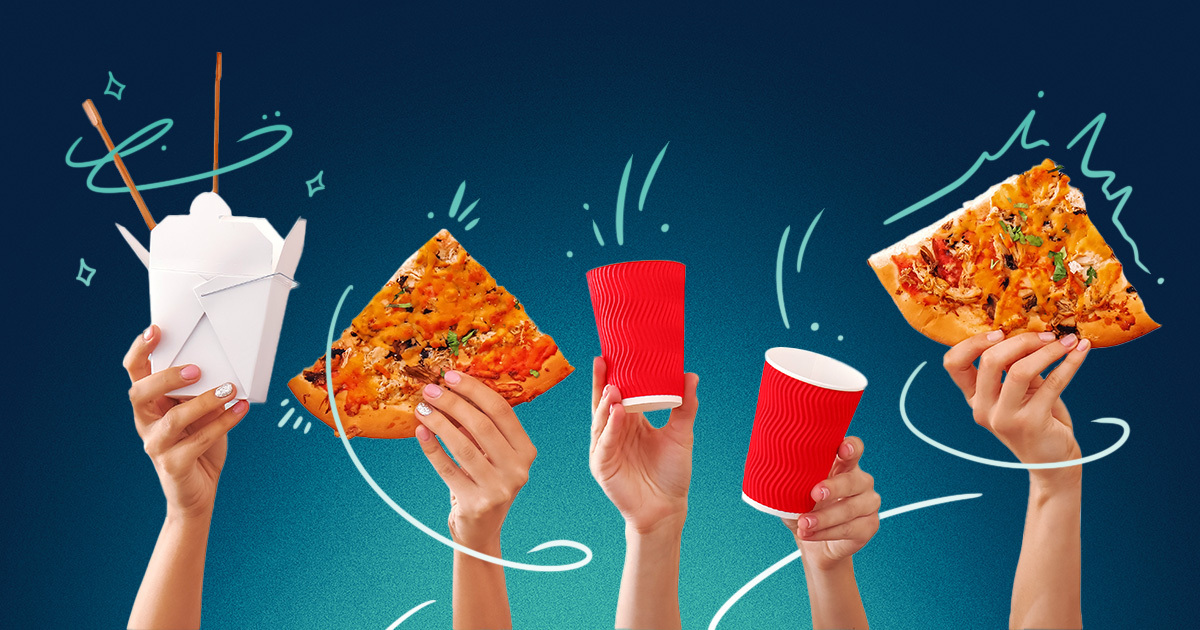
As a restaurant owner, the lunchtime rush should excite you when considering the increased revenue and customers. If dinner time is more disappointing than intriguing because you’ve been lacking customers lately, it might be time to consider localizing your marketing efforts.
A localized marketing approach can lead to better engagement, more efficiency, and, ultimately, higher conversion rates. A study by Google found that “76% of people who search on their smartphones for something nearby visit a business within a day.” By targeting users who are actively searching for products or services nearby, local campaigns leverage the urgency of customer intent, resulting in higher conversion rates and more concrete outcomes.
Before any restaurant takes a localized approach to marketing, it’s vital to keep up with the current trends. In today’s fast-paced and ever-evolving consumer market, adaptability is more crucial than ever for businesses. If companies fail to adjust to shifting consumer preferences, they risk losing relevance and market share to more agile and responsive competitors.
By staying ahead of or at least keeping up with changes in consumer behavior, businesses can not only maintain their current market position but also expand by attracting new customers or clients who are drawn to innovative and relevant solutions. With that, let’s take a look at this year’s top restaurant trends.
2024 Restaurant Trends
According to Forbes, technology, health and plant-based options, dining experiences, and personalization are top restaurant trends in 2024. In addition, snacking and loyalty programs are on the rise.
1. Technology for a Seamless Experience
Mobile apps for online ordering, making reservations, and earning rewards are still extremely popular this year. Within restaurants, technology can be seen in the form of digital menus, point-of-sale systems, and even artificial intelligence taking orders in the drive-thru. Additionally, ghost kitchens are becoming popular, operating as a “virtual restaurant” that only exists through delivery apps like Uber Eats and Door Dash.
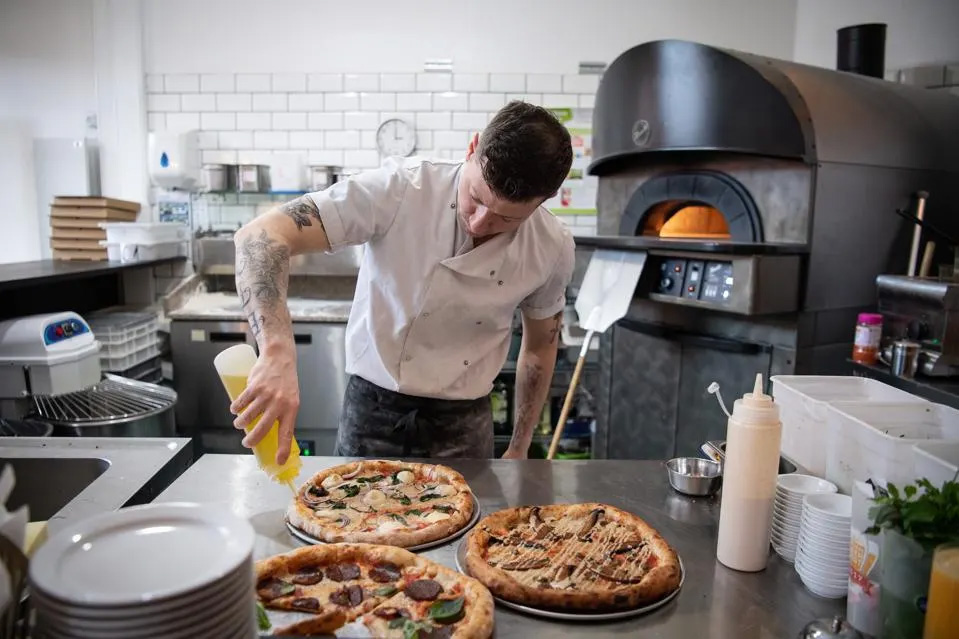
Source: Forbes
2. Organic, Plant-Based, and Healthy Menu Options
As consumers lean toward brands that emphasize sustainability, restaurants are doing what they can to be more environmentally conscious, including using eco-friendly materials and packaging. Regarding ingredients, sourcing food sustainably and controlling food waste is just as important as offering healthy and plant-based menu options. In fact, according to Mintel, 63% of consumers are interested in menu claims around freshness, and 44% would be motivated to eat fast food if healthier options were available.
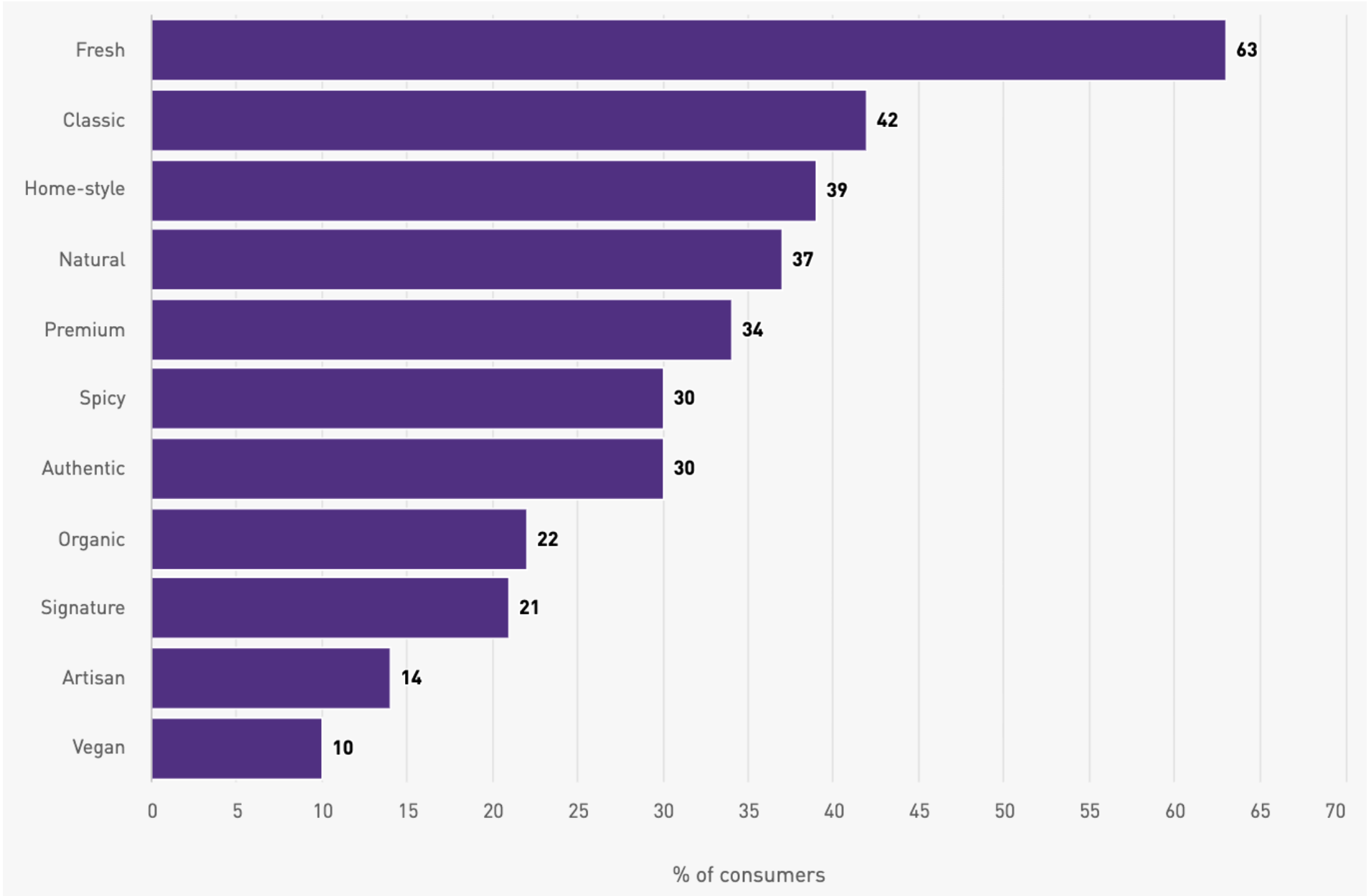
Source: Mintel
3. Dining is an Event
Consumers aren’t always looking for a quick fix when it comes to hunger (although some truly are just looking for whatever is most convenient). Humans are highly social creatures, and one of the easiest ways to socialize is over a meal. Restaurants can deliver experiences beyond great food that revolve around entertainment, themes, or even opening pop-ups.
4. Personalization & Customization
Customization is increasing in popularity, with “build-your-own” menus and options to swap ingredients based on preference or allergies. Personalized recommendations based on past orders are also trending, allowing consumers to easily order a frequently purchased item or providing suggestions based on past orders.
5. Consumers Want to Grab & Go
According to Restaurant News Resource, “the return to office trend has seen a revival in more snacking occasions among consumers.” With less time to dedicate to eating a meal, younger consumers are eating out more often and are in search of meals they can grab and go. Restaurants are responding, offering snack options that are quick, easy, and can be taken on the go.
6. Loyalty Programs and Free Products
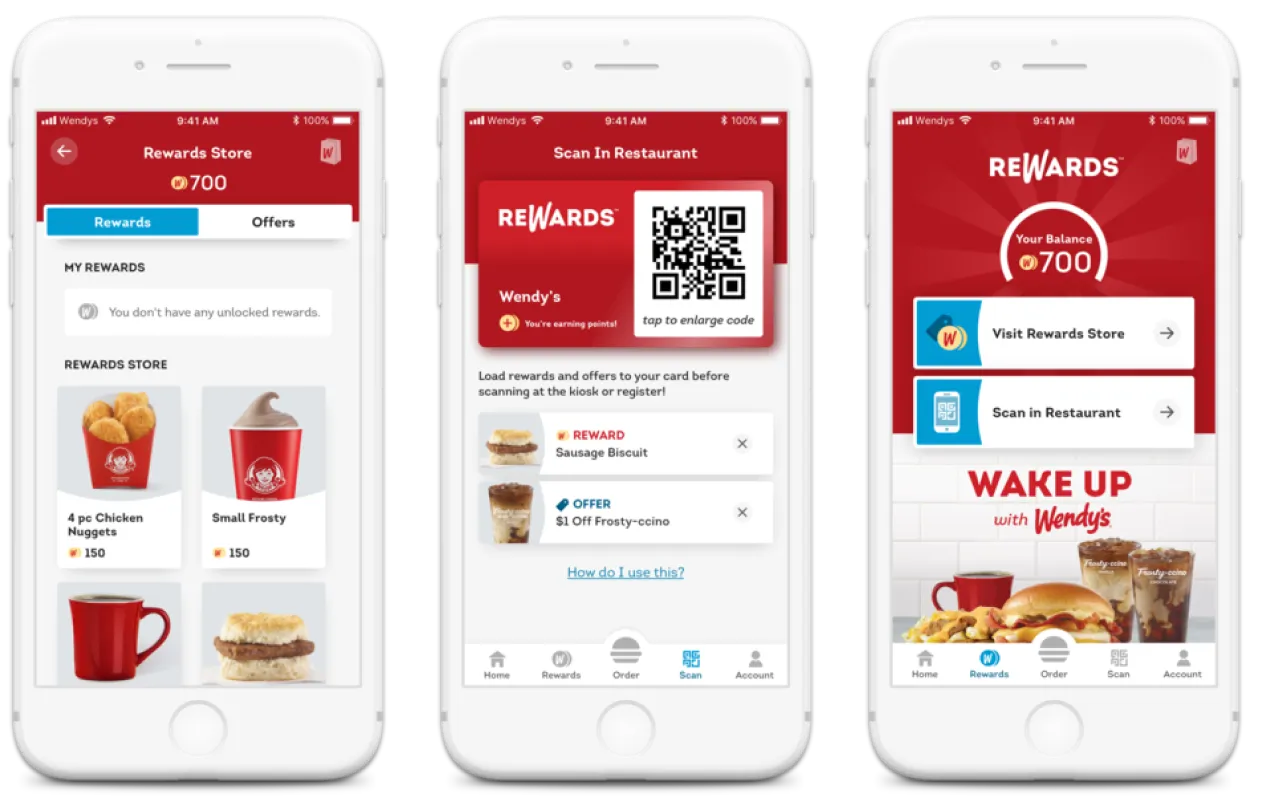
Source: Open Loyalty
Most hungry humans won’t turn down a good deal when looking for a meal. With freebies, discounts, specials, or points, restaurants can entice their guests to purchase and keep coming back through loyalty programs. Plus, restaurants are able to use consumer data to enhance customer experiences and capture first-party data. It’s a win-win for both parties.
Get Local
To capitalize on these trends and convert them into paying customers, restaurant brands need to get on the local level. From direct mail to guerilla marketing, restaurants have been leaning toward tactical local marketing and away from digital efforts. According to Kathryn Bleeker, Director of Marketing at Ziggi’s Coffee, “Consumers have become increasingly savvy and discerning. They can see through generic ads and sales tactics, and they crave more meaningful interactions with brands. By adopting localized marketing strategies, we can tell authentic stories, engage in grassroots efforts, and establish a real sense of community connection. This approach resonates with customers.”
National news coverage, paid search, and digital video ads aren’t giving local restaurants a great bang for their buck. In fact, according to a survey from Hubspot, “most people don’t like digital video ads, while 43% have never watched them.”
That’s not to say that restaurants should completely abandon digital efforts—but to cut through the digital noise and clutter, boots-on-the-ground efforts can help restaurants stand out from the crowd. In addition, localized marketing strategies lead to more authentic stories, more engaging grassroots efforts, and a real sense of community. Here are several tactics to localize marketing efforts.
1. Implement Local Search Engine Optimization (SEO)
In the digital age, people don’t just show up to restaurants and hope the food tastes good. According to Marvia, “97% of consumers conduct a local search when looking for restaurants,” with searches for “restaurants near me” or specific food items. Restaurants that are set up to capture these searchers through updated online directories such as Google My Business, Yelp, and Bing Places will have the best chance at capturing these users.
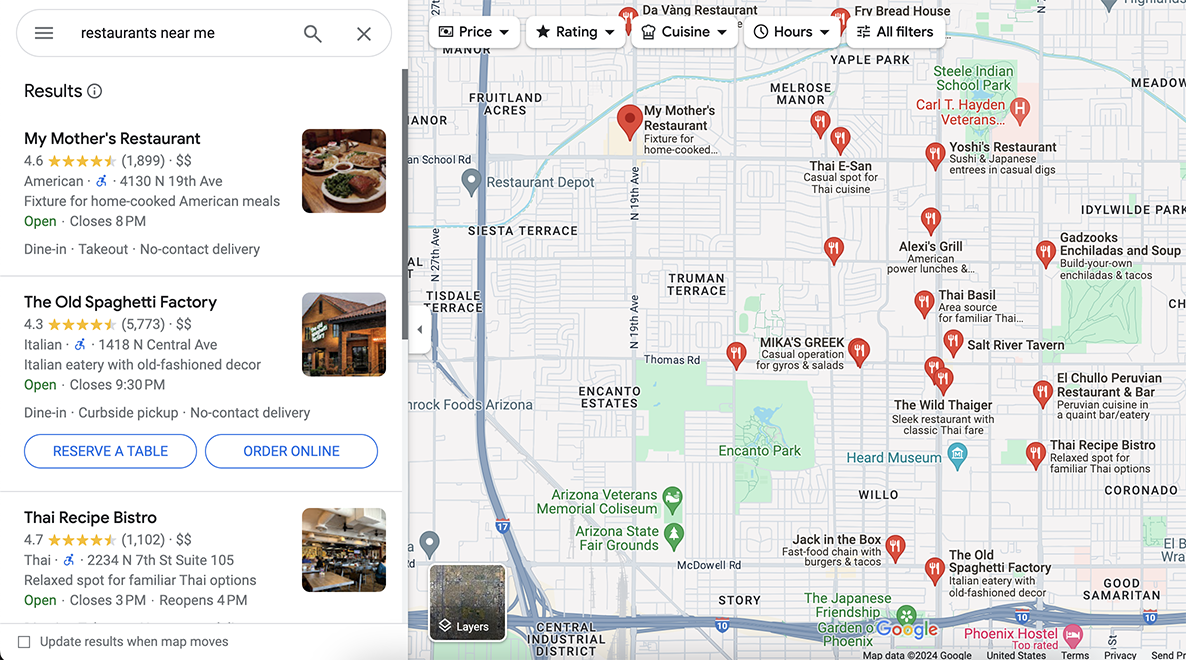
2. Partner with Local Influencers
Over the past seven years, influencer marketing has increased by nearly $20 billion. According to CreatorIQ, “more than 437,000 creators posted about food and beverage brands more than 1.2 million times, driving nearly 75.5 billion impressions, 3 billion engagements, and a whopping $4.8 billion in earned media value (EMV). And those numbers are just from the first half of 2023.”
Local micro-influencers can help drive traffic and sales while representing the brand in a more authentic and inviting way than influencers with more followers or more traditional advertising methods.
3. Serve Up Localized Content
Utilizing the same content across multiple restaurant locations doesn’t work—consumers want content that resonates with them and meets their needs. When restaurants localize their content, each location looks consistent and complete.
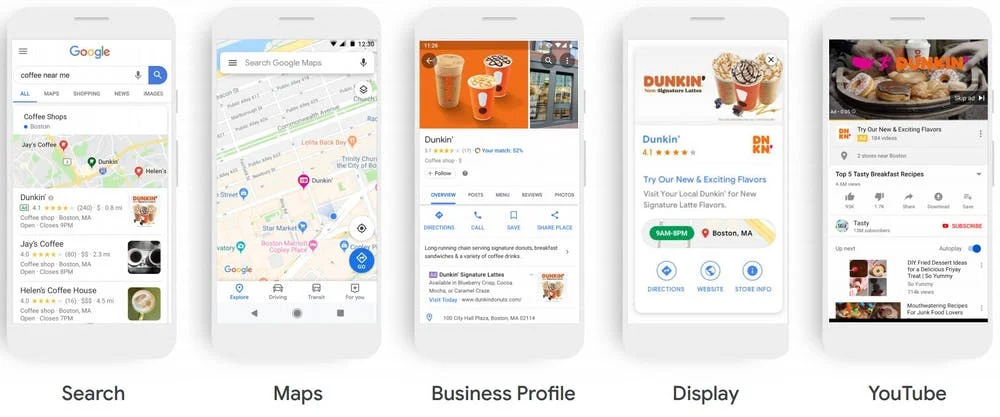
Source: Marvia
This includes the content restaurants use in advertising. Google’s local campaigns boost the visibility of certain restaurants for which customers are searching. In addition, targeting local consumers with localized content can help convert those researching into butts in booths.
Geo-targeting paired with localized content is a match made in heaven. Local slang, icons, and references only locals would know can help cut through ad clutter.
4. Tap into the Local Community
Restaurants, like any other business, can act as community members to help improve the community. When restaurants are seen as an integral part of the local community, consumers notice. Restaurants that give back tend to have more loyal consumers and earn more media time.
5. Ensure Overarching Consistency Between Locations
While content should vary between locations, the overall look, feel, and tone should be consistent to ensure immediate brand recognition and set consumer expectations. Brand guidelines will help determine what is consistent between locations and where content can be customized.
O.H. In Action: Pairing Trends with Localized Marketing at Daddy’s Chicken Shack
With a handful of locations across the United States, Daddy’s Chicken Shack is a “one-of-a-kind culinary destination that captures the essence of comfort food with its mouthwatering selection of pressure-cooked or perfectly grilled chicken made fresh upon order.” When faced with the challenge of opening a new location in Scottsdale, Ariz., Daddy’s Chicken Shack partnered with O.H. to get the word out.
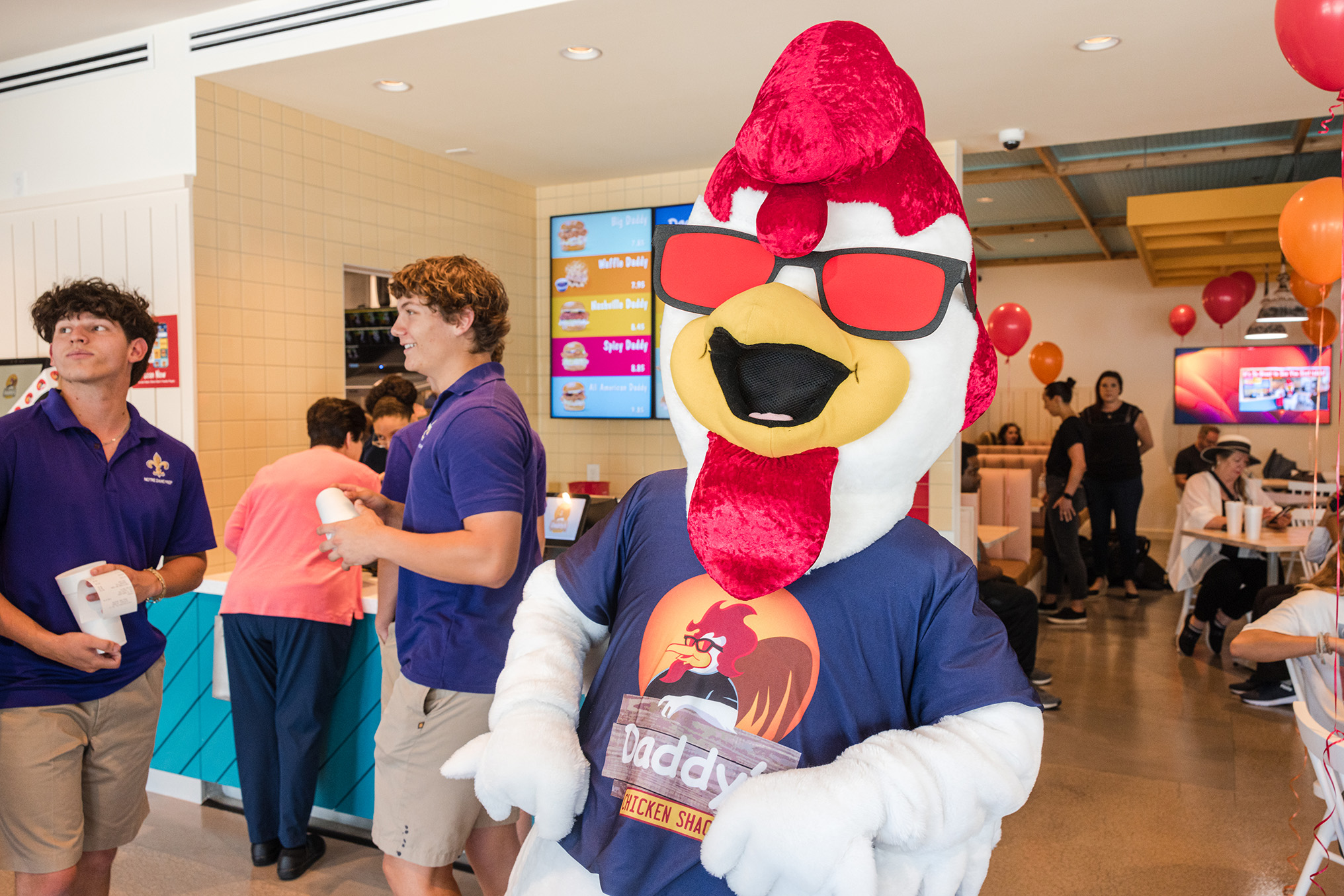
We developed and executed a grand opening event strategy with the objective of setting the stage for future locations by building market awareness through earned media relations and added-value marketing services, driving immediate foot traffic to the Scottsdale restaurant to increase sales, and promoting the Grand Opening Event in alignment with their business goals and corporate identity.
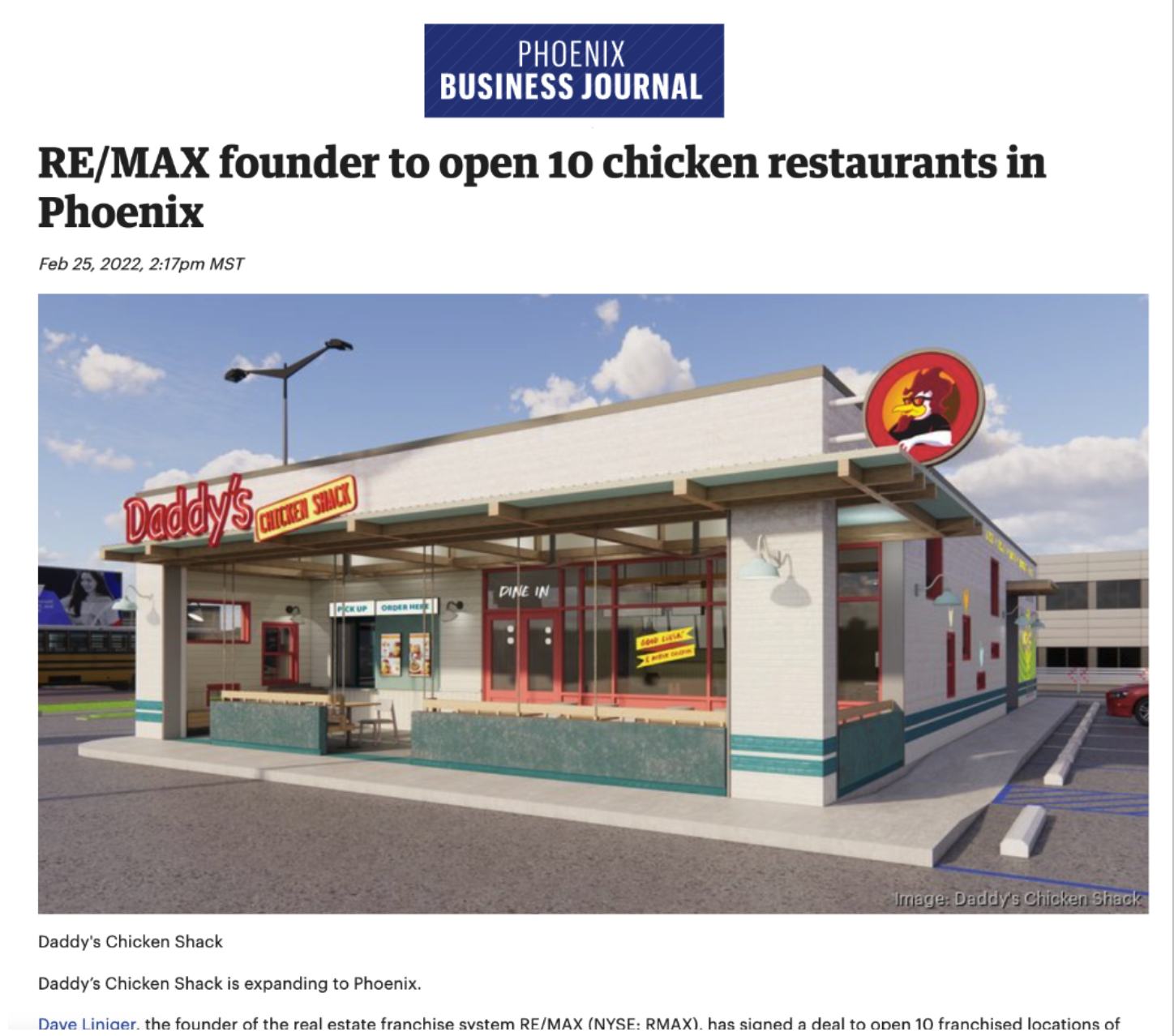
After developing promotions, including a 50% Friends and Family discount and the chance to win free chicken for a year during the grand opening, O.H. Partners coordinated and secured more than 50 earned media stories. Local news, radio, print, and digital outlets picked up the story, resulting in a total audience reach of almost 57 million with a publicity value of $176,164.
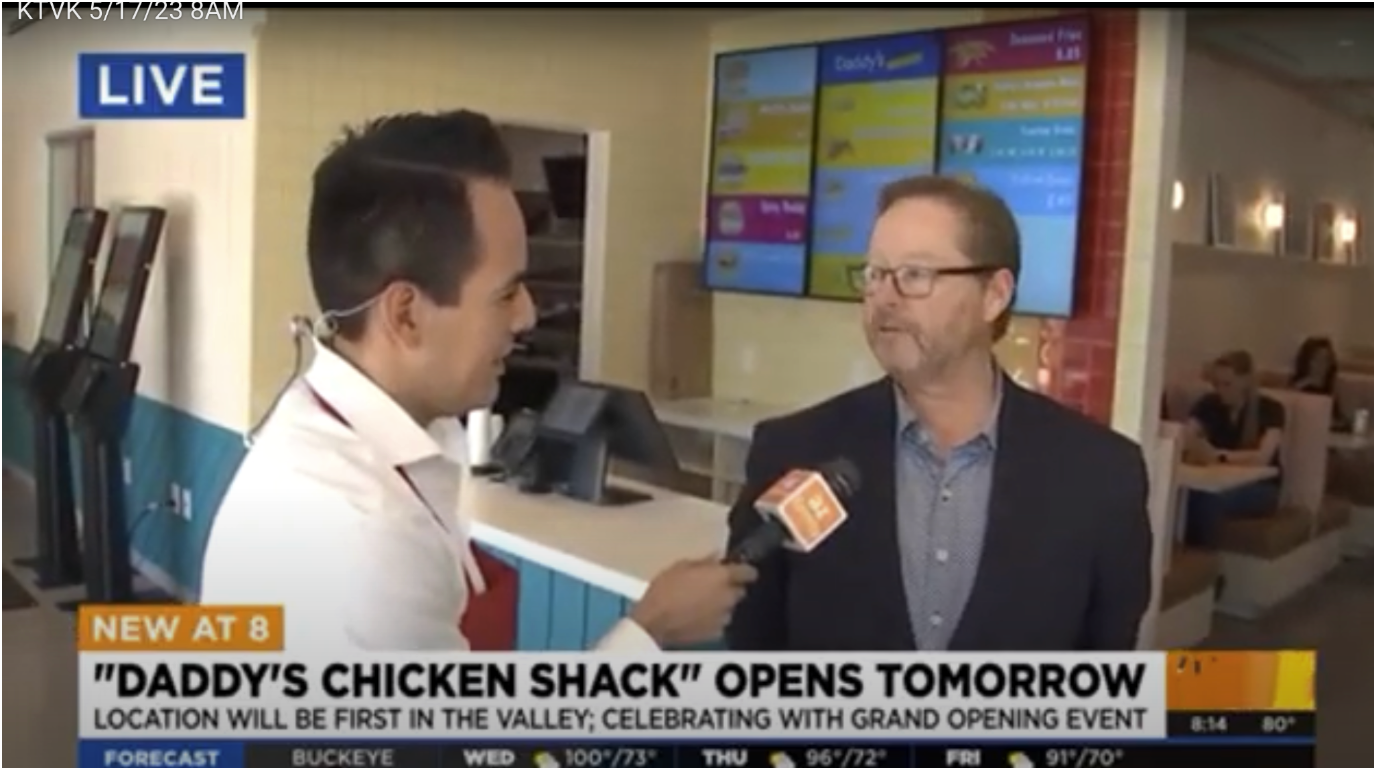
Ready to Serve Up Localized Marketing Strategies?
Talk with our team to learn more about how we can help. Click here to schedule a meeting.




